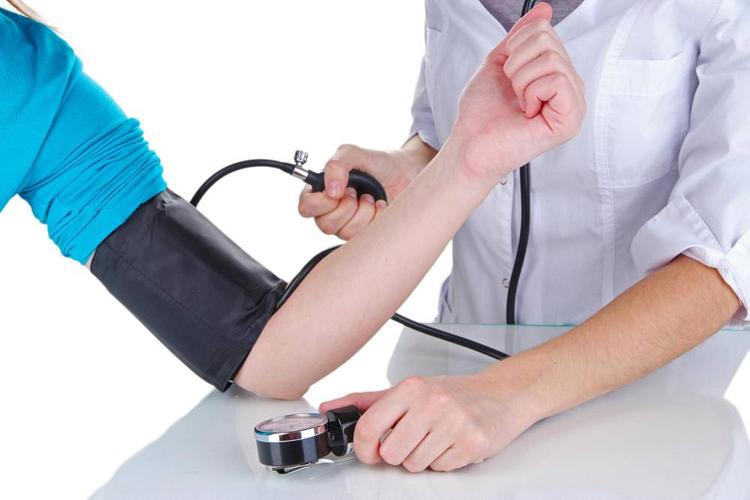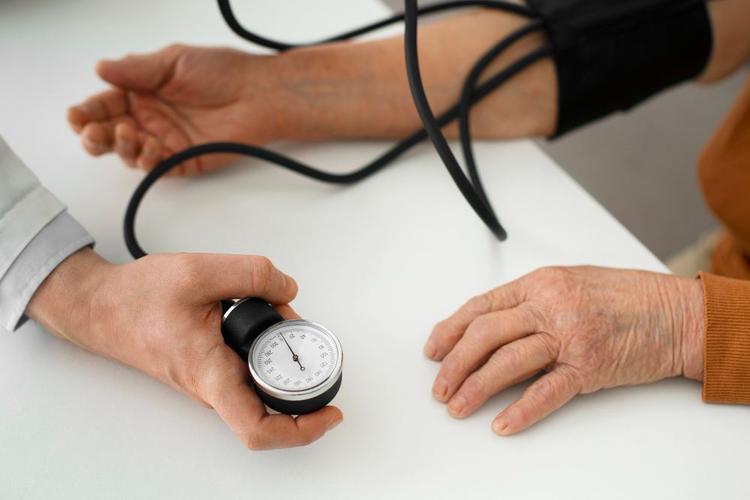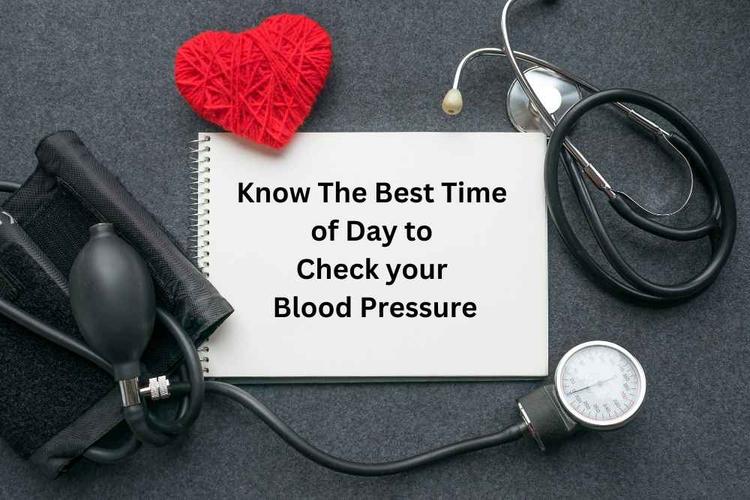Low Blood Pressure (Hypotension) - All you need to know about it.

Medically Reviewed By
Dr. Ragiinii Sharma
Written By Srujana Mohanty
on Aug 4, 2022
Last Edit Made By Srujana Mohanty
on Jan 8, 2025

Hypotension or low blood pressure is a rising concern in India. Undoubtedly, hypertension is a more serious blood pressure-related condition, but extremely low blood pressure can also be life-threatening. Ever since the COVID-19 pandemic has hit the world, the cases of low blood pressure, especially orthostatic hypotension, have raised concern among healthcare professionals. Therefore, it is imperative to inform the masses about hypotension. In this article, let us know in detail about low blood pressure (hypotension), its types, symptoms, measures to ease out symptoms, causes, and treatment so that you know how to deal with such conditions effectively.
What is hypotension?
Blood pressure refers to the force pushing blood against the arteries. When this force is lower than the optimum range, it is known as low blood pressure or hypotension. The levels of blood pressure fluctuate as per your regular activities. The blood pressure is measured at two intervals: firstly, when your heart beats, and secondly, between two successive heartbeats.
- Systole or systolic pressure is the one that supplies blood to your whole body. It measures the pressure at which blood is pumped through your arteries when the ventricles of your heart contract.
- Diastole or diastolic pressure supplies blood to your heart through the coronary arteries. It measures the blood pressure when your heart is at rest, that is, in between two successive heartbeats.
The reading of blood pressure shows two numbers. The first number represents systolic pressure, while the other number represents diastolic pressure. The normal blood pressure reading is 120/80. That is, the systolic pressure is 120 mm Hg, whereas the diastolic pressure is 80 mm Hg.
According to the National Heart, Lung, and Blood Institute, hypotension is when the blood pressure reading is 90/60. Systolic pressure is 90 mm Hg, and diastolic pressure is 60 mm Hg.
What are the types of hypotension?
Based on the situation wherein hypotension occurs and the main reason behind hypotension, low blood pressure can be of different types.
Orthostatic hypotension
In certain people, changing the position of the body, that is, standing from a sitting or lying position, can cause a drop in blood pressure. This is known as orthostatic or postural hypotension. Thus, a change in the position might make you feel lightheaded or dizzy. Orthostatic hypotension is the most common type of low blood pressure that may occur in people. Orthostatic hypotension can be caused due to various reasons:
- Elderly or older people are more susceptible to orthostatic hypotension.
- Pregnant women are also more prone to orthostatic hypotension
- People who have disorders in the autonomic nervous system, such as Parkinson's disease, can also have orthostatic hypotension. Almost 30-50% of Parkinson’s patients have low blood pressure.
- Diabetic people can also have orthostatic hypotension. Around 30% of people with diabetes suffer from orthostatic hypotension.
Postprandial hypotension
Postprandial hypotension, as the name suggests, occurs some time after you have your meal. It is a very common type of low blood pressure that majorly occurs in older people or people with autonomic dysfunction, as per a review article of 2010.
Neurally mediated hypotension
Blood pressure is an important body parameter that keeps a balance between your nervous system and the hormones and organs of your body. When an abnormal reflex action occurs between your heart and the brain, it is known as neurally mediated hypotension. The neurally mediated hypotension can occur due to various reasons like:
- Keep standing in one position for a prolonged time. This reason is more common in children for neurally mediated hypotension occurrence than in adults.
- Giving a small emotional reaction in response to a stimulus, like during a medical or dental procedure, makes you more prone to low blood pressure.
Severe hypotension
Shocks due to an injury or infection can cause a severe decrease in your blood pressure. Since, in a shock situation, the organs do not get enough oxygen and blood required by the body, thereby making the organs function inadequately. Severe hypotension must be dealt with immediately, and treatment should be given accurately. Otherwise, it can convert into a life-threatening disorder.
Other types
The other types of low blood pressure include those caused as a side effect of any medicine, vitamin deficiencies, or conditions that may affect your nerves, heart, liver, or hormone system. Low blood pressure can also be a side effect of the various medicines. The medicine used to treat high blood pressure (hypertension) can ultimately lead to reduced blood pressure (hypotension).
What are the symptoms of hypotension?
People with hypotension often do not show symptoms and might have excellent health. However, hypotension can indicate some other underlying health conditions like anaphylaxis or hormonal imbalance in some cases. The common symptoms of low blood pressure include:
- Dizziness
- Lightheadedness
- Fainting
- Cold, dry, pale, or clammy skin
- Chest pain
- Headache with a stiff neck
- Fever
- Diarrhoea
- Vision changes
- Vomiting
- Difficulty in breathing
- Allergic reactions like swelling
- Fatigue
- Dehydration or feeling of excessive thirst
- Weakness
- Fluctuations in heart rhythm
Slight low blood pressure is nothing to worry about. However, if you have extremely low blood pressure, then it can lead to a life-threatening situation. Extremely low blood pressure can occur when your body experiences shock due to blood loss or septic shock, or an anaphylactic reaction that a serious infection may cause. Some of the symptoms that you may experience due to the serious infection include:
- Rapid shallow breathing
- Rapid and weak pulse
- Confusion, especially in elderly people
- Clammy, cold, or pale skin
Can the symptoms of blood pressure ease out?
Certain modifications in your lifestyle, diet, and lifestyle can help ease the symptoms of low blood pressure or hypotension. According to the National Health Society (NHS), certain tips that you should follow to ease out the low blood pressure symptoms include:
- Change your posture gradually, that is, stand up from a sitting position very slowly.
- Keep bricks below your bed to keep your head raised at about 15 cm height (6 inches).
- Make a habit of taking frequent and small meals.
- Be at lying or sitting position for some time after taking your meal.
- Keep yourself hydrated, that is, increase your water intake.
Apart from these points, there are certain things that you need to avoid so that you don't feel the symptoms of low blood pressure often. These things include:
- Do not stay in a sitting or standing position for a very long time
- Do not change your posture suddenly
- Avoid bending down
- Avoid having caffeinated drinks at night
- Avoid too much consumption of alcohol
What are the causes of hypotension?
Various causes can lead to a drop in blood pressure. These factors can be as small as your eating plan or maybe as big as underlying heart disease. The causes of hypotension can be temporary or permanent.
Temporary causes of hypotension
Temporary causes refer to the factors which do not stay the same forever. In such cases, the blood pressure lowers for some time and then returns to normal when the conditions are favourable. Dietary changes, lifestyle management, and taking care of yourself can resolve low blood pressure caused due to temporary factors. According to the American Health Association (AHA), the temporary causes of hypotension include:
- Dehydration, or loss of water in the body,
- Changes in the eating pattern, like keeping a fast or following a strict diet.
- Putting a lot of strain on yourself.
- During pregnancy also, blood pressure tends to lower down.
- Being on bed rest for a long time.
- Alcohol consumption can also cause low blood pressure.
Lasting causes of hypotension
Lasting causes refer to the serious factors which are permanent in your life. According to the American Health Association (AHA), the potential lasting causes of hypotension include:
- Deficiency of nutrients like folic acid (vitamin B12) can lead to low blood pressure.
- Low blood pressure can occur if you stay in a standing position for a prolonged time.
- Any problem in the endocrine system, that is, the regulation of hormones in your body like hypothyroidism can also lead to hypotension.
- Certain heart problems can also affect the force with which the heart pushes the blood into your body.
- Septic shock, a life-threatening or severe response to some bacterial infection, can also cause hypotension.
- A life-threatening complication of anaphylaxis caused due to severe allergic reaction, known as anaphylactic shock, may also lead to hypotension.
- Extreme blood loss caused during an injury or accident can also cause low blood pressure.
Medicines that can cause hypotension
Low blood pressure can be the side effect of certain drugs or medicines. The medicines that can cause low blood pressure include:
- Olmesartan medoxomil or Benicar (drug prescribed for blood pressure)
- Tadalafil or Cialis (drug given for erectile dysfunction)
- Duloxetine or Cymbalta (SNRI antidepressant, that is, serotonin and norepinephrine inhibitor)
- Hydrochlorothiazide (generic diuretic)
- Versions of propranolol like innopran XL or inderal (beta blockers)
- Furosemide or lasix (diuretic)
- Levodopa (generic Parkinson’s disease drug)
- Prazosin or minipress (alpha blockers)
- Pramipexole or mirapex (drug used in Parkinson’s disease)
- Atenolol or Tenormin (alpha blocker)
- Doxepin or silenor and imipramine or Tofranil (tricyclic antidepressants)
- Drugs of the sartan family like valsartan (blood pressure drugs)
- Sildenafil or viagra (drug for erectile dysfunction)
How is hypotension treated?
The major step in treating hypotension involves diagnosing the cause of hypotension. Therefore, dealing with the main cause of hypotension can improve hypotension automatically. The various ways of treating hypotension includes:
Increasing blood volume
Sometimes hypotension can occur due to decreased levels of blood in your body. Therefore, fluid resuscitation, that is, fluid infusion in your body through intravenous fluids, blood, or plasma transfusion, can help increase the blood volume and treat low blood pressure.
Making blood vessels constrict
Certain medicines can help elevate the blood pressure by causing the blood vessels in your body to constrict. Thus, these drugs work oppositely compared to the hypertension drugs that work by relaxing the blood vessels in your body.
Changes in how your body handles fluid
Certain medicines interfere with the functioning of the kidneys, making them keep more salt and fluid in your body. Thus, increased fluid volume in the body helps manage low blood pressure effectively.
How can low blood pressure be raised naturally?
There are various home remedies that you can include in your daily regime to raise your blood pressure naturally. Some of these natural home remedies include:
- Include more sodium or salt in your daily diet.
- Avoid consuming alcohol or beverages containing alcohol
- Discuss whatever medicines you take with your doctor as low blood pressure can be a side effect of some medicine that you are taking.
- Sit in a cross-legged position. It can increase your blood pressure.
- Keep yourself hydrated by taking in more fluids.
- Include small and frequent meals in your diet.
- Wear compression stockings to reduce the amount of blood that can get caught in your lower legs or feet.
- Avoid changing your position suddenly.
- Be aware of low blood pressure symptoms and consult your doctor if you observe them yourself.
Takeaway
Hypotension or low blood pressure is a common condition that occurs in most people. Handling the symptoms of hypotension and treating them directly or indirectly is crucial to leading a healthy lifestyle. Now that you know what hypotension is, its symptoms, causes, measures to ease out symptoms, and treatment, you will better understand your condition and get the right treatment at the right time.
Frequently Asked Questions (FAQs)
-
What causes low blood pressure hypotension?
Hypotension can be caused due to various reasons like side effects of certain medicines, lifestyle, and dietary factors.
-
What does low blood pressure usually indicate?
Low blood pressure indicates that the blood in your arteries is not flowing with the force with which it should normally flow.
-
What is considered dangerously low blood pressure?
90/60 mm Hg is considered an extremely low blood pressure.



